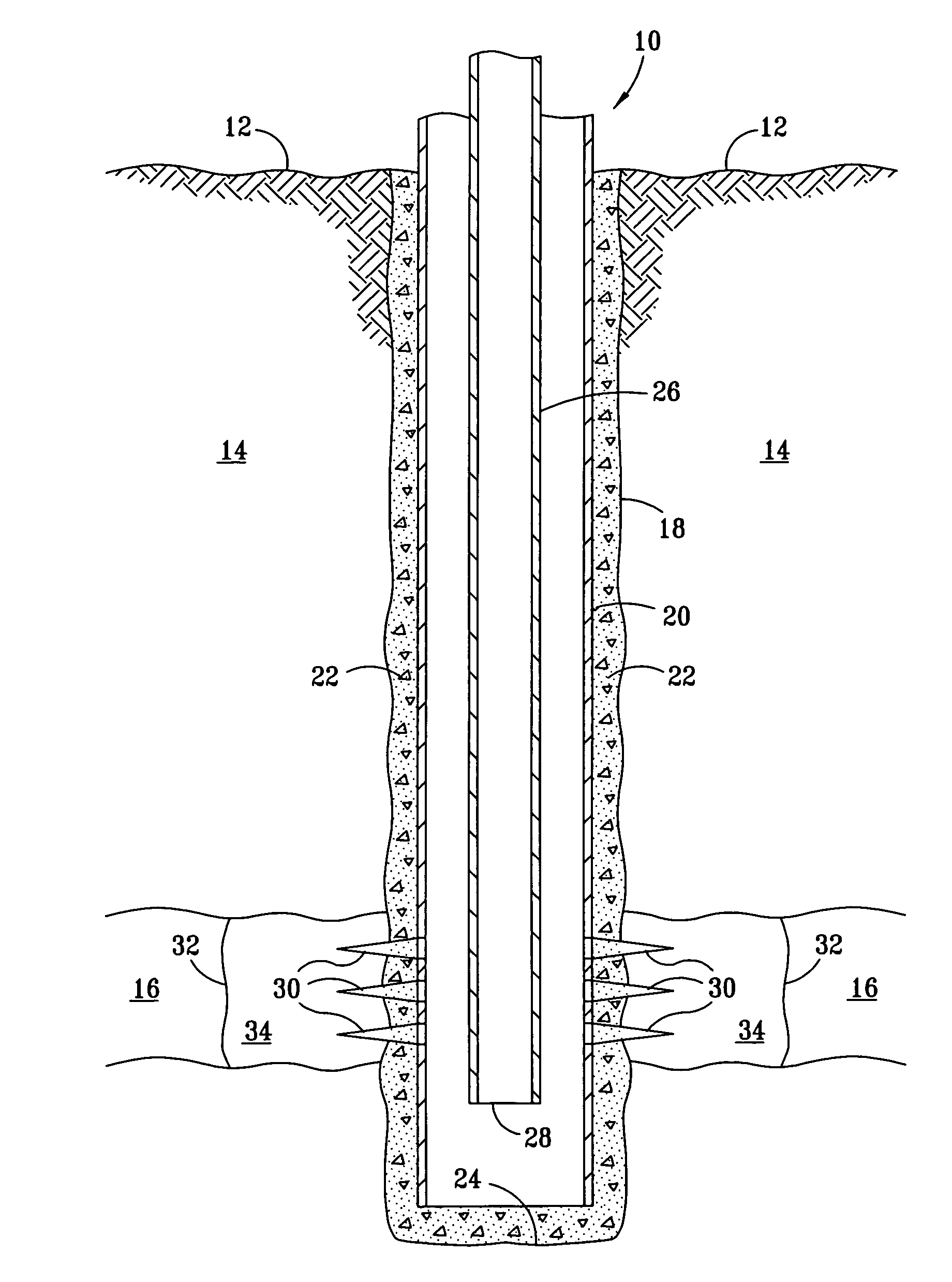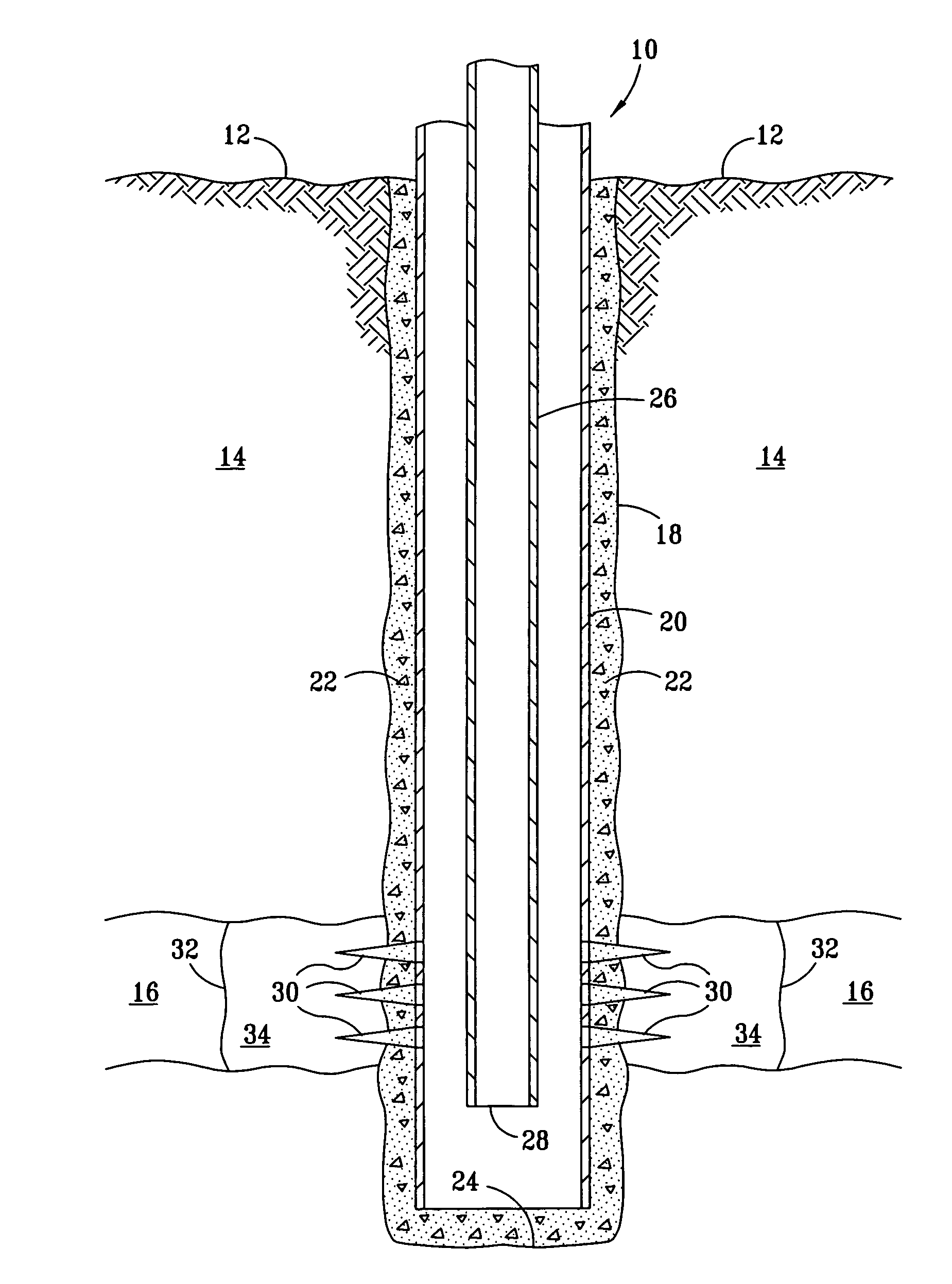Method for removing iron deposits in a water system
a technology of iron deposits and water systems, applied in water/sewage treatment by oxidation, quary waste water treatment, borehole/well accessories, etc., can solve the problems of high production losses, relatively slow production of chlorine dioxide, and high cos
- Summary
- Abstract
- Description
- Claims
- Application Information
AI Technical Summary
Problems solved by technology
Method used
Image
Examples
Embodiment Construction
[0015]In the FIGURE a well 10 is shown extending from an earth surface 12 through an overburden 14 and penetrating a formation 16. The well comprises a wellbore 18, including a casing 20, which is cemented in place with cement 22. The casing extends to near a bottom 24 of the well. A tubing 26 is provided inside the casing for the production of fluids from subterranean formation 16. Perforations 30 are positioned through casing 20 in formation 16 to permit the flow of fluids from formation 16 into the casing. These fluids are then produced by pumping, natural flow from the formation or the like through the tubing 26 to the surface. A line 32 defines a near wellbore zone 34.
[0016]As well known to those skilled in the art, pumps, valves, and the like are used to achieve the flows as described in well 10. If well 10 is a water well, water can flow into casing 20 via perforations 30 for production by pumping upwardly through tubing 26. Even if tubing 26 and casing 20 are non-ferrous, it...
PUM
| Property | Measurement | Unit |
|---|---|---|
| weight percent | aaaaa | aaaaa |
| weight percent | aaaaa | aaaaa |
| weight percent | aaaaa | aaaaa |
Abstract
Description
Claims
Application Information
 Login to View More
Login to View More - R&D
- Intellectual Property
- Life Sciences
- Materials
- Tech Scout
- Unparalleled Data Quality
- Higher Quality Content
- 60% Fewer Hallucinations
Browse by: Latest US Patents, China's latest patents, Technical Efficacy Thesaurus, Application Domain, Technology Topic, Popular Technical Reports.
© 2025 PatSnap. All rights reserved.Legal|Privacy policy|Modern Slavery Act Transparency Statement|Sitemap|About US| Contact US: help@patsnap.com


